What I Learned Teaching iRest to At-Risk Women in Guatemala: A Q&A Interview With Level 2 iRest Teacher Warren Spencer
While the iRest teachings are timeless and unchanging, the manner in which they are expressed and facilitated by teachers is unique to each person’s interests and the fields they feel drawn to focus on.
In this interview, Warren Spencer, who’s currently enrolled in iRest certification, shares some of the ways he’s felt called to share iRest within his local communities and those he’s had the privilege of visiting.
1. How did you get started with iRest practices?
I was introduced to iRest Yoga Nidra as part of a regular offering by Jennifer Cabanero at The Yoga Tree, a yoga studio in the greater Seattle area. I was hooked and so I attended a three-day retreat. Some months later, I took the level 1 training.
2. What impact has iRest had on your day-to-day life?
The greatest impact has been to become more aware of the non-stop chattering mind. You know how in daily life the mind starts talking and then talks, and talks, and talks? In these moments I’m not really aware of my surroundings, understanding what others might be saying, or in a position to gain meaningful insights.
I’m working on, and getting better at, stepping back to notice my chatter and say: “Okay enough! You’ve had your say about us, and there is more to life than all the processing you are so good at. For now, I’m going to focus on looking at the moment through a different lens–a lens of awareness that might provide some different insights.”
3. What was the catalyst for you deciding to enroll in our certification program?
My level 1 teacher training was a catalyst because it was great and because you can take it before making any further commitments. However, it was really the benefits gained from that first deeper dive into the practice that led me to believe that its secular approach to self-awareness and self-healing would make it available and acceptable to many of the co-cultures in which I interact. These include my family, the Hispanic community, my drum circle friends, fellow yogis, and my faith-based community.
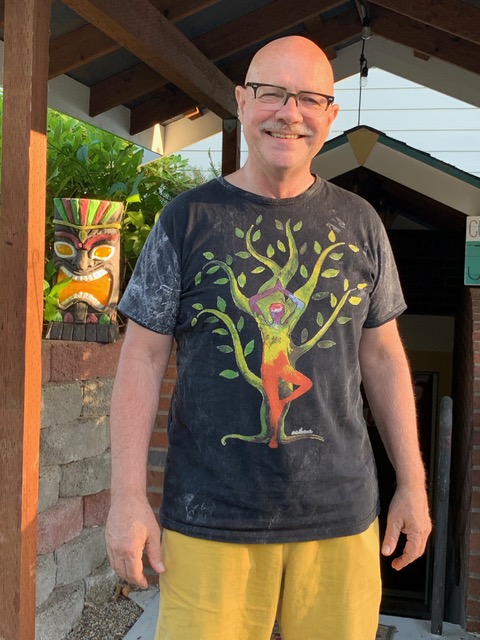
Warren about to head into his at-home studio.
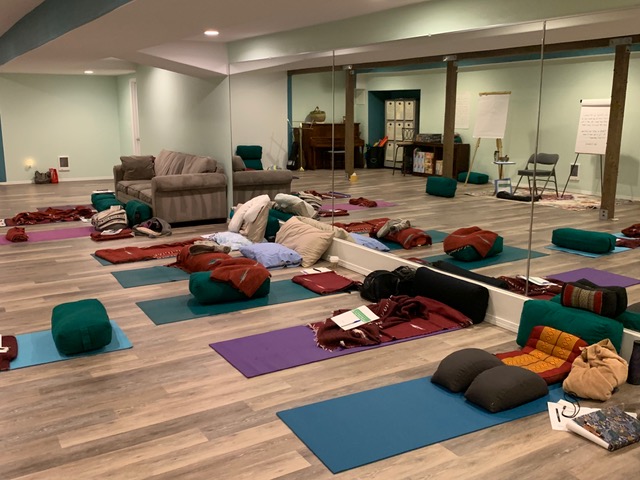
Inside Warren's at-home studio.
4. Within your personal iRest practice, are there any experiences or realizations that stand out for you?
One day deep into the COVID experience, I decided to do a personal practice with my eyes open, sitting in my at-home office. This is not a calm setting in front of two large computer screens.
My normal practice is lying down with a comfy blanket, darkened room, and my eyes closed. This was a challenge and my attempt to see how this might provide different messengers and help integrate the benefits of my normal practice into the challenges of everyday life.
I set my intention on just keeping drishti eyes or what others might call “owl gazing” or “green gazing.”
The practice ended with nothing in particular standing out. Then, two hours later, I couldn’t take my post-meditation eyes off the maple and lace yin-yang “artwork” hanging on the wall within sight of my prior gazing. Within the lighter part of one side, the dark circle stood out. Within the darker side, the white circle of light stood out.
Within times of darkness, there is a message of light within it. Within times of light and delight, there may be hidden some fear that wants to be heard. What stood out to me was an understanding of holding opposites at the same time. They become something new – a complete circle of life, with shades of light and shades of color that form a unity in order to embrace our diversity. When the stress of work hits me from all directions, I now look up at what was once “just a piece of art” to what is now so much more.

5. You’ve mentioned that as part of your iRest training process, you guided your two daughters-in-law through multiple sessions. What did you gain from that experience?
A greater awareness of the unity that we are all in this together–how inner awareness of an individual gained through the iRest practice is important for the strength and unity of couples, family connections, and friendships. And, how those connections are then able to unite us and help our community to interact in meaningful ways. On a personal level, I experientially learned that iRest works outside the framework of a yoga studio in a multitude of settings. Without the setting of COVID for all its negative impacts, I would not have had the privilege of this opportunity.
6. What feedback did your daughters-in-law give you about their experience?
The multiple sessions were with one daughter-in-law in person and the other via zoom. Both commented, with kindness, in their own way that the meditation presentations got better as the sessions progressed. My delivery of meditation sessions got better when I put my note cards down, closed my eyes, and delivered the various protocol dialogues by visualizing the process for me during the delivery. This really helped with timing.
They both really liked the freedom of self-inquiry provided by iRest (rather than a counseling setting), and the choice to share or not share their experiences from the mediation process. These sessions included discourse presentations before each session and time for questions after each session. That enabled a safe container and meaningful way for them to gain knowledge of their experience. Of course, we also established the mutual trust that they were free to share their experiences outside of the sessions, but that I would hold everything as confidential.
7. Prior to lockdown, you had an opportunity to share iRest with a group of at-risk women in Guatemala. Please tell us about your experience.
A dear friend needed an English/Spanish speaker to assist with interpretation as she provided spiritual direction and self-discovery through art and contemplative prayer. It began as me being an interpreter until I nudged my way in to provide some guided meditation. With approval, I grabbed the Spanish translations from our teacher’s resources for help.
While well-written and perfect for many, I used them for idea generation and decided that my natural and non-native Spanish dialogue would be better received as a good example of imperfection. Laughter proved to be a great way to create trust and a safe environment.
Now, what to do in a short week and a few sessions? The mind went into full gear. What part of iRest could I provide that would be useful while there, but also after I left. Could I provide elements of iRest acceptable in their environment and culture? Are there elements that would provide hope or provide continued exploration into the beautiful Essential Self and act as reminders to not be self-defined by negative experiences?
Needless to say, I was humbled by my experience. Most participants had to work hard to find a way to get a few hours away from jobs or helping their families with daily survival needs. While many worked hard to get there, they also stood back as events started.
Trust is hard to come by and has to be earned, not presumed. Starting with my friend’s watercolor art therapy provided a great environment for creating a safe environment and leading the way for meditation later on.
8. Did your experience in Guatemala evolve your understanding of the benefits/uses of iRest in any way?
Absolutely. I quickly realized that all my thoughts leading up to this experience were essentially about me. All I needed to do was to select some key steps within the 10-step protocol and let the self-exploration take place in a safe environment. That is the beauty of iRest. It is not about directing but rather being alongside others as a guide fostering a safe environment.
This resulted in our meditation sessions exploring sensations. Exploring first the outer environment and then gently exploring some emotions as opposites. Then, turning to focus on the development and awareness of our inner resource that is available whenever the need arises.
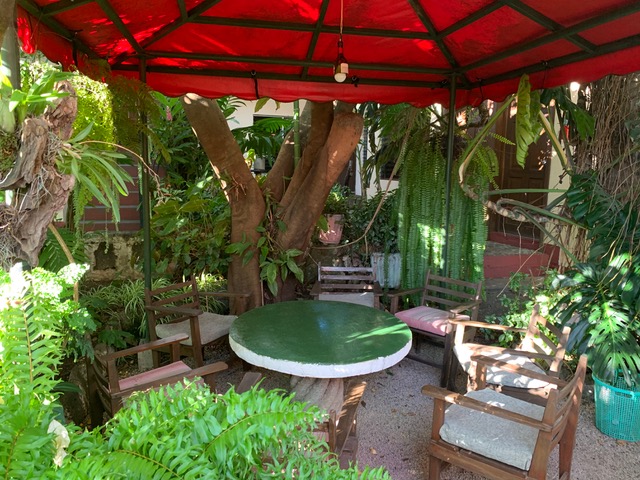
Guatemala class setting for seated meditations.
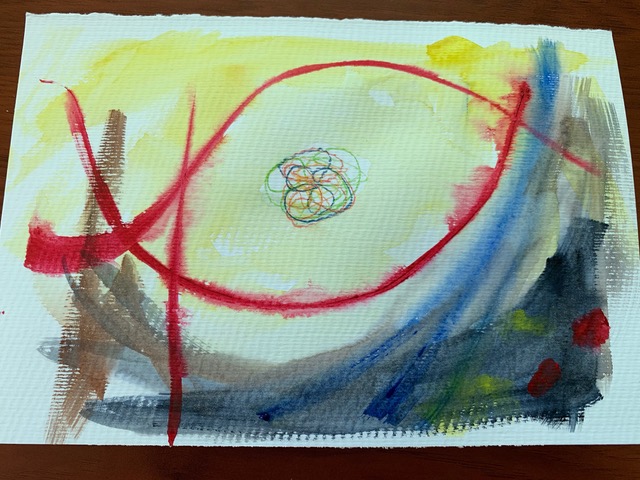
Art therapy in Guatemala.
9. What was some of the feedback from the women you guided?
Tears. Smiles. Laughter. But mostly “thanks for caring”. I left with the knowledge that every little bit helps and with the hope that even this small bit of input might be a link to finding safety and joy in their futures.
10. How did this experience impact how you guide iRest sessions/want to use iRest in the future?
Historically, I’ve always thought of meditation as being a yoga thing. I’ve known iRest isn’t exclusively linked to yoga but I had to gain experiential knowledge by guiding iRest outside of the yoga box to fully understand this. For me, this means that I’m now more comfortable to explore and present the idea of participating in iRest sessions to a variety of different groups–whether or not that’s how I name it at the time.
11. What are your future plans as an iRest teacher?
My hope is to provide iRest in a group setting for people with Parkinson's disease and for people who have gone through cancer treatments.
My wife and I have set up a day retreat to bring groups to our property to have a day away from being self-defined by Parkinson's disease or cancer.
We have a yoga studio, drum circle facility, fire pit for evening songs or talking, raised gardens, a quiet room, and paved winding trails for walkers, wheelchairs, or grandchildren with bikes and electric cars.
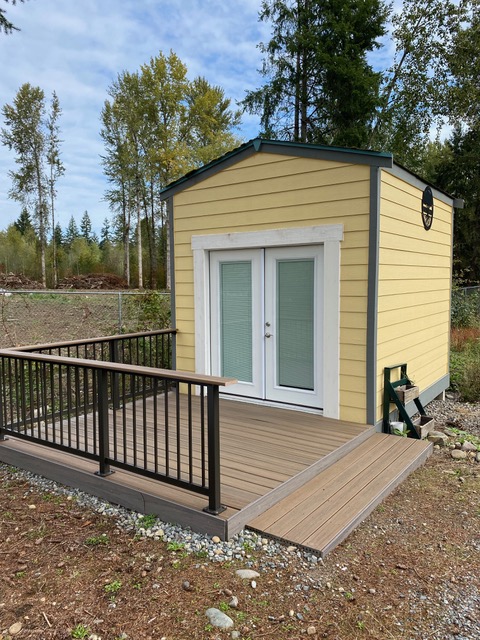
Outdoor shot of the "quiet room" on Warren's property for co-meditation dyads.
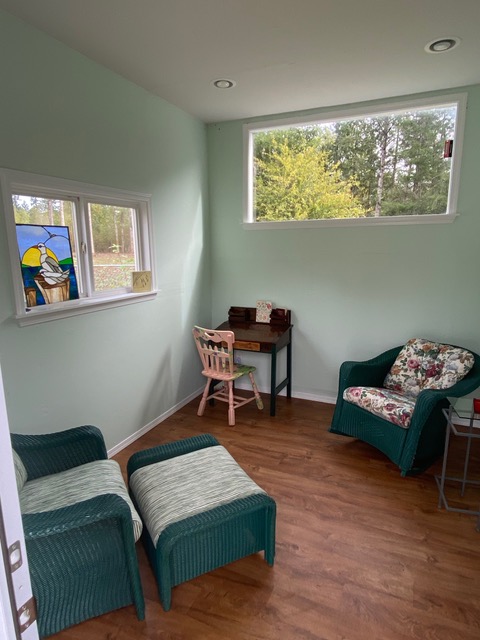
Outdoor shot of the "quiet room" on Warren's property for co-meditation dyads.
12. How do you see your role in helping others through the modality of iRest? What’s your unique approach or perspective?
If there is a unique approach, I would say it’s preconditioning the setting for iRest meditation through walks, chanting, or singing, and most particularly through drumming meditation.
13. What do you want people who are struggling to find inner peace to understand about iRest?
While there is clearly a role for counseling (which iRest is not), iRest meditation is a wonderful doorway for expanding your understanding of self, by providing a new awareness of your environment and life situation that may enable you to easily experience inner peace. With iRest, you only have to be honest with yourself–there are no others to please, no others to whom you have to explain anything.
14. Any final contemplations/inspirations about iRest that you’d like to share with the community?
We are all in this together and through our unity we can embrace our diversity.
If you're inspired by Warren's story and feel called to share iRest in your unique way, begin your journey with our Hybrid L1 Teacher Training in March. Learn from two of the best: Senior Director of Teachings and Programs, Stephanie Lopez, and Senior iRest Trainer, Jennifer Cabanero.



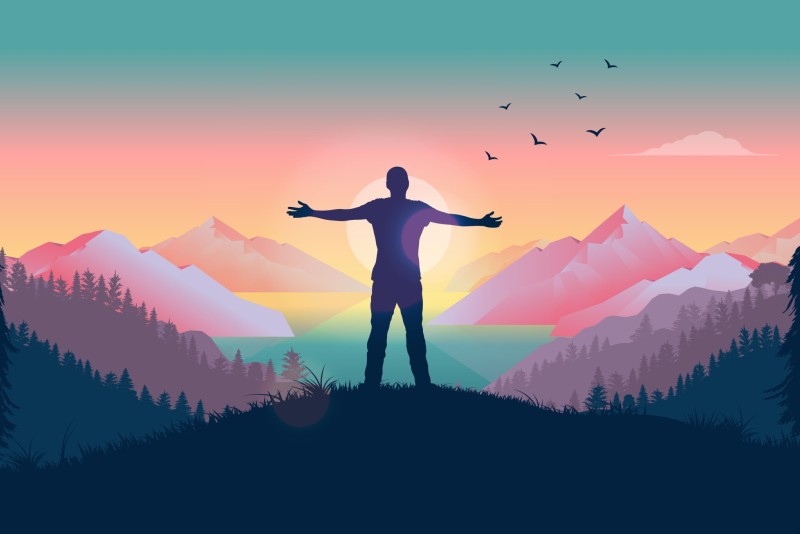
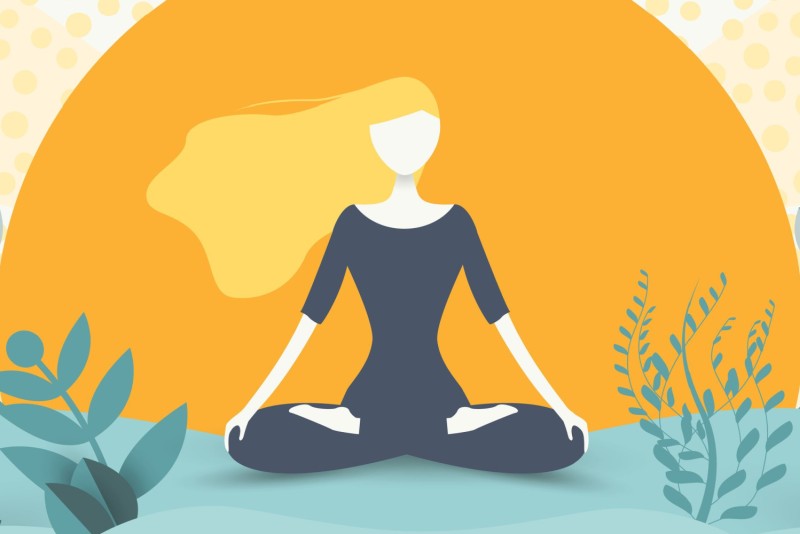

Join the conversation
We would love to hear what you have to say. Log in or Register to post comments.